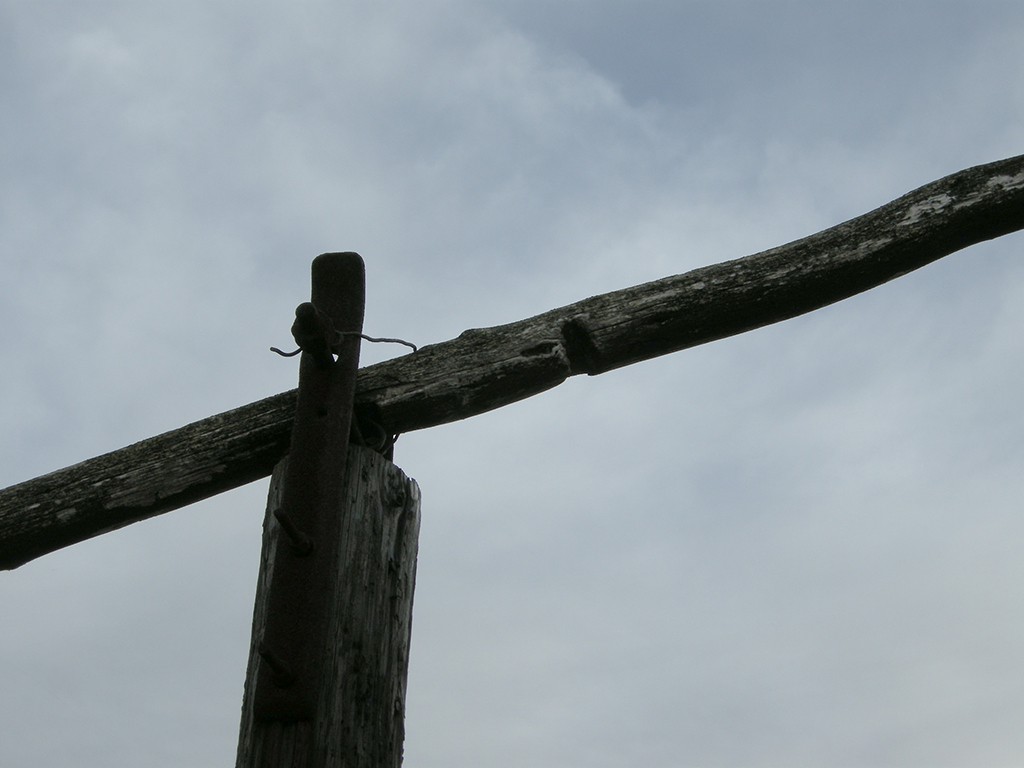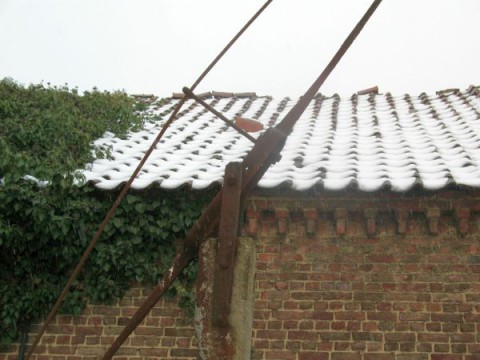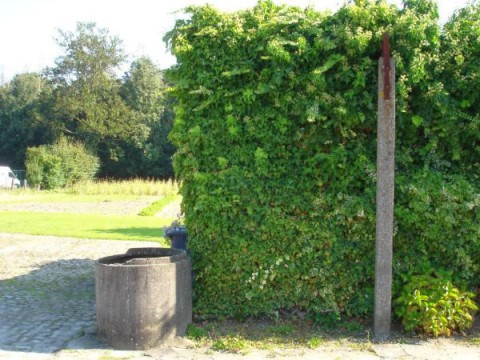Well sweep
Before the widespread distribution of tap water around 1950, the well was the main supplier of water.

Each village often had one or more communal wells that were equipped with a village pump. Most farms had their own well. After all, they not only needed water for people and for the household, but also for the livestock.
Bringing water up from a well is quite a job for which several methods of raising water have been devised, each with their own advantages and disadvantages. One of the most important factors in choosing a system is the depth of the water level. In large parts of Flanders, the groundwater is only a few meters below ground level. Here a simple method such as the well sweep (or rocker) will do just fine.
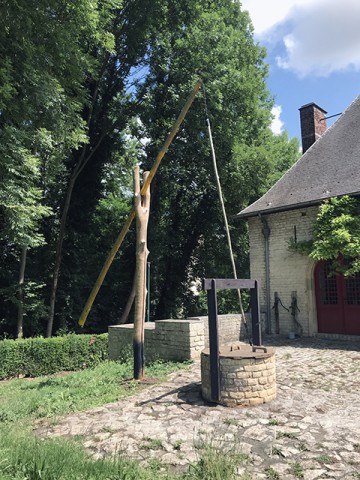
What is a well sweep?
A well sweep is a device used to bring up water from a well with little effort and in one smooth movement. It works as a lever. If the lever arm is fixed at the right position on the vertical post, there is enough counterweight to lift a full bucket of water with hardly any force. To lower the empty bucket you will need a little force, but that downward movement is much less tiring. Another advantage is the speed. Using a well sweep, you can bring up water faster than by hand or using a pulleys or a windlass…Tuinbouw in de provincie Antwerpen: groenteteelt ©KADOC-KU LEUVEN BE/942855/920/20
What do we know about it?
Although the well sweep was widely used in Flanders, hardly any examples have survived and our knowledge (1) of this small and remarkable heritage is limited.
We mainly know them from old prints, paintings and photographs. The old, original sweeps now seem to have disappeared. Here and there we still find remnants or a reconstruction made by people with a heart for heritage.
The inventory of the MOT only includes about twenty well sweeps, but not a single one is still complete. Do you know one more? Let us know!
(1) WEYNS J. (2) 1951: Onze Kempische bornputten in 't Zwaantje II, volksalmanak voor het Land van Heist, p. 39-68.
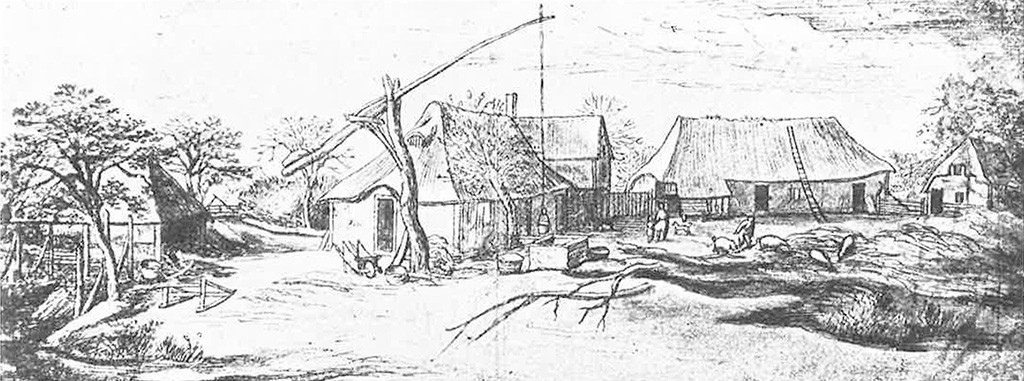
drawing by Pieter Paul Rubens
Want to install one?
Do you have a well with shallow water? Then you can think about building a sweep. If there are traces of an old one, such a reconstruction is certainly a good idea. With the help of old pictures you can recreate it as faithfully as possible. Remnants such as old ironwork or a remaining post, can be usefull sources for the design of the new well sweep. Such a historically accurate reconstruction is ideal, but naturally you can build freely following your own design. That's just as good for keeping this technical heritage alive.
Even though the construction looks simple, before you start building there is a lot to consider: the wrought iron fittings, the choice of wood, the connections, the correct proportions... That is why the MOT is working together with Heritage Voorkempen on a practical building guide to help DIY enthusiasts get started.
What parts does it consist of?
The sweep arm rests on an upright pole, very often a naturally forked tree trunk. If there is a suitable one in the vicinity of the well, a living tree is used. Sometimes an iron fork is mounted on top of a (more or less) straight timber or concrete pole.
The fork supports the axle around which the sweep arm pivots. At the end above the well, a vertical well stick is attached with a chain and swivel to make it flexible. At the bottom of this stick is a well hook on which the water bucket hangs. Often a counterweight is hung on the other end of the sweep arm to balance the lever.

Are they all the same?
Although the sweep is a simple construction overall, there is still some variation. Of course, the dimensions differ from well to well and the choice of materials is also diverse. Depending on the possibilities and preferences of the builder (who was probably also the user in most cases) you will see other versions.
Do you choose a heavy forked post that could last a long time or a light construction that was quickly built and replaced? If you don't want to change a rotting wooden post, you can use a concrete one. Even recovered telephone poles are used…
The local blacksmith played a key part in the construction of a sweep. The axle and the attachments of the well stick and the well hook were, as far as we know, always forged in iron. We even know sweeps whose complete lever arm was made of iron.
The advantages?
Perhaps the simplicity of the construction was an important advantage. Except for some iron parts forged by the blacksmith, the basic parts can be found and made by the farmer himself. A wooden pump f.e. is certainly much more difficult to make (see our pump making project) and a metal pump was expensive to buy.
We know from the testimonial of a lady who used her well sweep on a daily basis, that the sweep was very reliable simply because "it always worked". A water pump can freeze or run empty. In wells with shallow water depths, the sweep may well be the fasted and most ergonomic way to bring up water, certainly faster than a windlass.
Building a new sweep at the museum
The MOT built a sweep at the Guldendal department, which we use during school workshops. The building plan is new and not based on an existing example.
In the nearby Prinsenbos wood we felled a dead, forked ash tree for the pole. Because ash wood is not very durable, the underground part was scorched over a fire. By partially charring the wood, it is less susceptible to mould, fungi and insects. That way it lasts longer.
We determined the dimensions of the well rocker experimentally by making a prototype with lighter beams to see which proportions are right. An experienced blacksmith made the ironwork based on historical examples.

